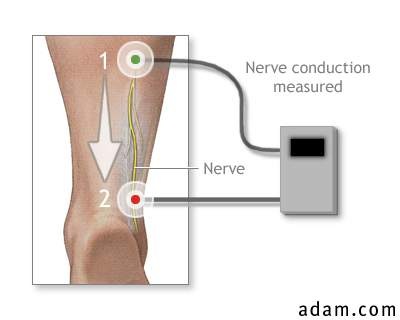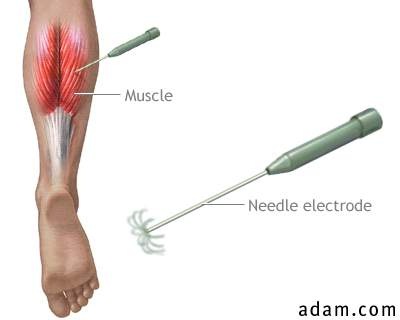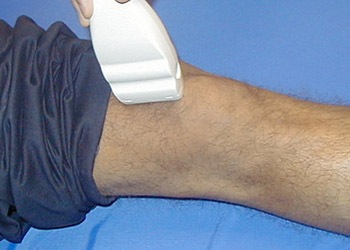


 |
 |
 |
 |
 |

At MDS, We Care
MDS offers quality and convenient patient diagnostic services demonstrated by the thousands of satisfied patients and practitioners who have used our services. MDS provides the convenience of allowing the patient/practitioner to choose where and when the diagnostic tests are performed with operating hours to meet possible off-hour and weekend schedules.
ABOUT NCV TESTING
What is an NCV test and why is it performed?
An NCV test determines the speed of conduction of impulses through a nerve. This test is used to diagnose nerve damage or destruction.
How the test is performed
The nerve is stimulated, usually with surface electrodes, which are patch-like electrodes (similar to those used for ECG) placed on the skin over the nerve at various locations. One electrode stimulates the nerve with a very mild electrical impulse. The resulting electrical activity is recorded by the other electrodes. The distance between electrodes and the time it takes for electrical impulses to travel between electrodes are used to calculate the nerve conduction velocity.

How to prepare for the test
Creams and lotions should be washed off prior to testing. If a lower study is performed, you should wear shorts or loose fitting pants.
How the test feels
The impulse given may feel like an electric shock. Depending on how strong the stimulus is, the patient will feel it at varying degrees. It may be uncomfortable for some patients (though only during the actual test and there should be no residual pain once the test is completed). Often the nerve conduction test is followed by an EMG (electromyography) which involves needles being placed into the muscle and the patient being asked to contract that muscle. This can be uncomfortable during the test, and subsequent muscle soreness from the needles may be experienced as well.
ABOUT EMG TESTING
What is an EMG test and why is it performed?
A test that measures muscle response to nervous stimulation (electrical activity within muscle fibers). EMG is most often used when people have symptoms of weakness, and examination shows impaired muscle strength. It can help to differentiate primary muscle conditions from muscle weakness caused by neurological disorders. EMG can be used to differentiate between true weakness and reduced use because of pain or lack of motivation.

How the test is performed
A needle electrode is inserted through the skin into the muscle. The electrical activity detected by this electrode is displayed on an oscilloscope (and may be displayed audibly through a speaker). Because skeletal muscles are isolated and often large units, each electrode gives only an average picture of the activity of the selected muscle. Several electrodes may need to be placed at various locations to obtain an accurate study.
After placement of the electrode(s), you may be asked to contract the muscle (for example, by bending the arm). The presence, size, and shape of the wave form produced on the oscilloscope (the action potential) provide information about the ability of the muscle to respond to nervous stimulation. Each muscle fiber that contracts will produce an action potential, and the size of the muscle fiber affects the rate (how frequently an action potential occurs) and size (amplitude) of the action potential(s).
How to prepare for the test
If a lower study is ordered, you should wear shorts or loose fitting pants.
How the test feels
There may be some discomfort with insertion of the needle (similar to an intramuscular injection). Afterward, the examined muscle may feel tender or bruised for a few days.
ABOUT DIAGNOSTIC ULTRASOUNDS
What is an Ultrasound study and why is it performed?
Medical sonography (ultrasounds) is a diagnostic medical imaging technique used to visualize muscles, tendons, and many internal organs, to capture their size, structure and any pathological lesions with real time tomographic images. Doppler images can also be used to evaluate blood flow in veins and arteries in extremities to ensure no abnormalities exist (blood clot, etc). These are used to perform vascular studies.
How the test is performed
The ultrasound examination is a non-invasive test uses ultrasonic waves (sound with a frequency greater than 20,000 Hz) to create images of internal structures, specifically, soft tissue.

SCHEDULING AN APPOINTMENT
Patients usually are scheduled for EMG/NCV testing and diagnostic ultrasound through their treating physician. Please contact to schedule an appointment with us.
PAYMENT
Most insurance plans will cover EMG/NCV and diagnostic ultrasounds. We provide diagnostic services for PPO, Worker Compensation, and Personal Injury patients.